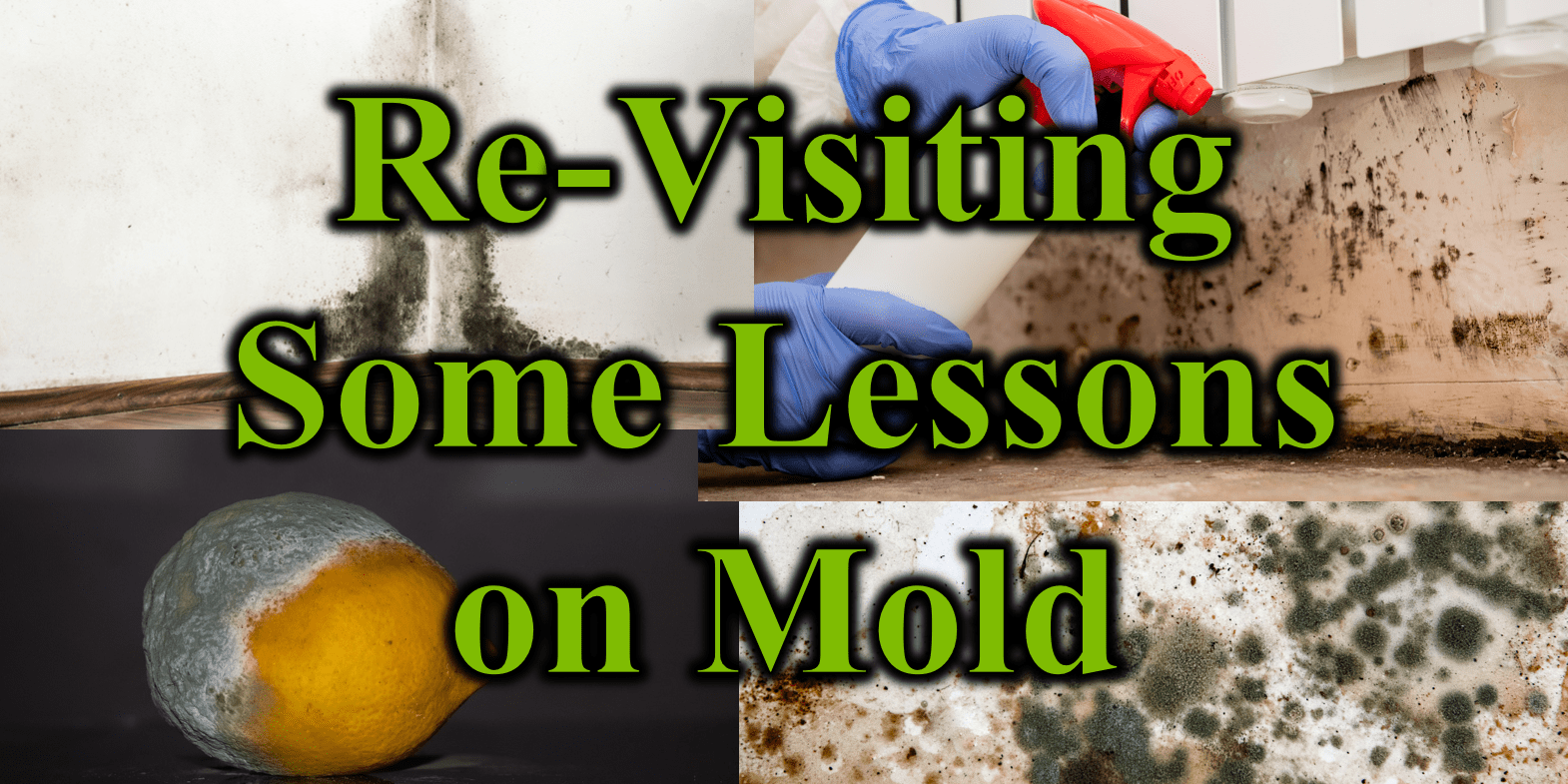Over the years, we have addressed mold from many angles through a multitude of article reviews and news stories. Our aim is always to equip our readers and our patients with information and wisdom that benefits them or their family. As we do this, there are some articles so full of great learning points that they’re worth coming back to occasionally. This article from 2021 has been generally reviewed by us before at (https://sanctuaryfunctionalmedicine.com/topics/mold-and-biotoxins/mycotoxins-impact-immunity/) but a few points deserve repeat attention. Rather than a cohesive whole, this review will be a series of focus paragraphs each emphasizing one or two points that you should remember.
DESPITE THE CONTROVERSY
Despite controversy to the contrary, mold toxins do play a role in human health as many studies demonstrate adverse effects of human exposure to a variety of mycotoxins. Aflatoxins are known to damage the liver, even leading to liver failure (1). The cilia lining the respiratory tract is known to demonstrate some measure of dysfunction when exposed to inhaled mold spores and/or mycotoxins (2). In other studies, increased intestinal permeability and altered enterocyte metabolism has been reported with mycotoxin in the GI tract (3). Various neurologic symptoms have been correlated with mold although causation has not been proven (4). Studies looking at the potential connection between mycotoxin exposure and multiple sclerosis (MS) are underway (5) and well as possible connections between Parkinson’s disease and mycotoxins (6). Sure, some articles are out there which deny the “toxic mold syndrome” (7,8), but much more literature supports connections than deny them.
HYPERSENSITIVITY AND ALLERGIES
Mycotoxins themselves have not been shown to cause a direct allergic response through IgE antibodies, yet the other fungal proteins and components do induce such reactions. Their other components can induce type I allergies through IgE. They can also trigger Type 3 and type 4 responses. These occur through the deposition of immune complexes in type 3 where antibodies accumulate with the allergen to form microscopic complexes that get stuck in tissue triggering the allergic reactions. T helper cells are involved with type 4 and occur more with high mold exposure often in occupational setting. In the clinic, we also see patients who seem to become sensitive to everything under the sun, even water at times. This usually involves mast cells in mast cell activation syndrome.
MOLD AND AUTOIMMUNITY
Several autoimmune diseases have been linked with mold toxin exposure and deserve mention as well as investigation in actual patients in our office. Multiple Sclerosis stands out as one neurodegenerative disease which has links with at least Candida species (9). In patients without MS actual disease, several neural protein antibodies have been found in individuals exposed to mold (10,11). In another study, several specific neural protein antibodies connected to neurodegenerative diseases were found (12). In a mouse model, gliotoxin was found to exacerbate an experimental autoimmune encephalomyelitis in lab animals (13). Antimitochondrial antibodies associated with primary biliary cirrhosis have also been found higher in a small set of individuals exposed to mold (14). In another study, DON and Ochratoxin A seemed to possess the potential to induce the severity of rheumatoid arthritis (15). One more autoimmune condition associated with mycotoxin exposure is inflammatory bowel disease, including Crohn’s and Ulcerative Colitis (16,17,18,19). In even this short paragraph, one can see that the conventional medical world must face the fact of autoimmune connections with mycotoxins.
SUMMARY
Conventional medicine like the two articles (7,8) dismissing toxic mold syndrome continues to downplay the role of mycotoxins in the ability of chronically ill patients without clear explanations for their symptoms to recover. They also cannot seem to fathom the possibility that mold toxins trigger autoimmune conditions in some patients. Meanwhile, we keep leading patients to recovery by identifying this trigger and guiding patients through detox of their environment and their body. Helping patients restore healthier more abundant lives simply requires being open to the research literature and applying what we learn to the patients sitting in front of us.
Primary Article:
Kraft, S., Buchenauer, L., & Polte, T. (2021). Mold, Mycotoxins and a Dysregulated Immune System: A Combination of Concern?. International journal of molecular sciences, 22(22), 12269. https://doi.org/10.3390/ijms222212269
Secondary Articles:
- WHO Mycotoxins. [(accessed on 9 August 2021)]. Available online: https://www.who.int/news-room/fact-sheets/detail/mycotoxins
- Lessard M., Savard C., Deschene K., Lauzon K., Pinilla V.A., Gagnon C.A., Lapointe J., Guay F., Chorfi Y. Impact of deoxynivalenol (DON) contaminated feed on intestinal integrity and immune response in swine. Food Chem. Toxicol. 2015;2015:7–16. doi: 10.1016/j.fct.2015.02.013.
- Gonkowski S., Gajecka M., Makowska K. Mycotoxins and the Enteric Nervous System. Toxins. 2020;12:461. doi: 10.3390/toxins12070461.
- Empting L.D. Neurologic and neuropsychiatric syndrome features of mold and mycotoxin exposure. Toxicol. Ind. Health. 2009;25:577–581. doi: 10.1177/0748233709348393.
- French P.W., Ludowyke R., Guillemin G.J. Fungal Neurotoxins and Sporadic Amyotrophic Lateral Sclerosis. Neurotox. Res. 2019;35:969–980. doi: 10.1007/s12640-018-9980-5.
- Sava V., Reunova O., Velasquez A., Sanchez-Ramos J. Can low level exposure to ochratoxin—A cause parkinsonism? J. Neurol. Sci. 2006;249:68–75. doi: 10.1016/j.jns.2006.06.006.
- Chang C., Gershwin M.E. The Myth of Mycotoxins and Mold Injury. Clin. Rev. Allergy Immunol. 2019;57:449–455. doi: 10.1007/s12016-019-08767-4.
- Rudert A., Portnoy J. Mold allergy: Is it real and what do we do about it? Expert Rev. Clin. Immunol. 2017;13:823–835. doi: 10.1080/1744666X.2017.1324298.
- Pisa D., Alonso R., Jimenez-Jimenez F.J., Carrasco L. Fungal infection in cerebrospinal fluid from some patients with multiple sclerosis. Eur. J. Clin. Microbiol. Infect. Dis. 2013;32:795–801. doi: 10.1007/s10096-012-1810-8.
- Campbell A.W., Thrasher J.D., Madison R.A., Vojdani A., Gray M.R., Johnson A. Neural autoantibodies and neurophysiologic abnormalities in patients exposed to molds in water-damaged buildings. Arch. Environ. Health. 2003;58:464–474. doi: 10.3200/AEOH.58.8.464-474.
- Gray M.R., Thrasher J.D., Crago R., Madison R.A., Arnold L., Campbell A.W., Vojdani A. Mixed mold mycotoxicosis: Immunological changes in humans following exposure in water-damaged buildings. Arch. Environ. Health. 2003;58:410–420. doi: 10.1080/00039896.2003.11879142.
- Abou-Donia M.B., Lieberman A., Curtis L. Neural autoantibodies in patients with neurological symptoms and histories of chemical/mold exposures. Toxicol. Ind. Health. 2018;34:44–53. doi: 10.1177/0748233717733852.
- Fraga-Silva T.F.C., Mimura L.A.N., Leite L.C.T., Borim P.A., Ishikawa L.L.W., Venturini J., Arruda M.S.P., Sartori A. Gliotoxin Aggravates Experimental Autoimmune Encephalomyelitis by Triggering Neuroinflammation. Toxins. 2019;11:443. doi: 10.3390/toxins11080443.
- Lieberman A., Curtis L. Mold Exposure and Mitochondrial Antibodies. Altern. Ther. Health Med. 2020;26:44–47.
- Jahreis S., Kuhn S., Madaj A.M., Bauer M., Polte T. Mold metabolites drive rheumatoid arthritis in mice via promotion of IFN-gamma- and IL-17-producing T cells. Food Chem. Toxicol. 2017;109:405–413. doi: 10.1016/j.fct.2017.09.027.
- Stange E.F., Schroeder B.O. Microbiota and mucosal defense in IBD: An update. Expert Rev. Gastroenterol. Hepatol. 2019;13:963–976. doi: 10.1080/17474124.2019.1671822.
- Gunn S.R., Gunn G.G., Mueller F.W. Reversal of Refractory Ulcerative Colitis and Severe Chronic Fatigue Syndrome Symptoms Arising from Immune Disturbance in an HLA-DR/DQ Genetically Susceptible Individual with Multiple Biotoxin Exposures. Am. J. Case Rep. 2016;17:320–325. doi: 10.12659/AJCR.896949.
- Brewer J.H., Thrasher J.D., Hooper D. Chronic illness associated with mold and mycotoxins: Is naso-sinus fungal biofilm the culprit? Toxins. 2013;6:66–80. doi: 10.3390/toxins6010066.
- Payros D., Menard S., Laffitte J., Neves M., Tremblay-Franco M., Luo S., Fouche E., Snini S.P., Theodorou V., Pinton P., et al. The food contaminant, deoxynivalenol, modulates the Thelper/Treg balance and increases inflammatory bowel diseases. Arch. Toxicol. 2020;94:3173–3184. doi: 10.1007/s00204-020-02817-z.
- Fan W., Lv Y., Ren S., Shao M., Shen T., Huang K., Zhou J., Yan L., Song S. Zearalenone (ZEA)-induced intestinal inflammation is mediated by the NLRP3 inflammasome. Chemosphere. 2018;190:272–279. doi: 10.1016/j.chemosphere.2017.09.145.
Sanctuary Functional Medicine, under the direction of Dr Eric Potter, IFMCP MD, provides functional medicine services to Nashville, Middle Tennessee and beyond. We frequently treat patients from Kentucky, Alabama, Mississippi, Georgia, Ohio, Indiana, and more... offering the hope of healthier more abundant lives to those with chronic illness.







